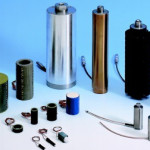Piezoelectric Stack Actuators
An actuator is essentially a motor, or a generator of motion, usually linear and limited in range. A piezo actuator will generate a linear displacement when an electric field is applied, and this displacement is also capable of applying a force, and therefore the actuator is capable of doing work. The amount of force that can be applied depends on the cross sectional area of the actuator.
Stack actuators are constructed of multiple ceramic elements stacked together, with the direction of polarization of each element parallel to the direction in which the stroke or blocking force will be developed and connected in parallel.

A stack actuator can be constructed in two ways: discrete stacking and co-firing:
Discrete stacking offers the widest range of ceramic materials, flexibility in the shape of the ceramic elements, and better control of heat generated during high frequency operation. The tradeoff is that voltages of 500 V – 1000 V usually are needed to operate discrete stacking actuators.
Co-fired actuators are driven by much lower voltages, 100 V – 150 V, but most co-fired stacks are prepared from low Curie point ceramics, and are incompatible with high electrical input.
Read More On Piezo Applications
What is the Purpose of a Piezo Motor
Piezo Aiding Advancements in The Healthcare Industry
Discrete Piezo Stacks for Ultrasonic Applications
Self Charging Power Cells and Batteries


No Comments